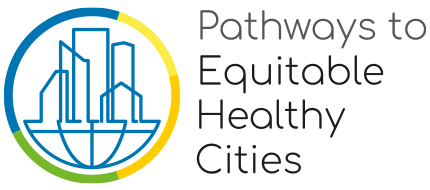The 19th century notion of cities as spectres of ill-health re-emerged early in the Covid-19 pandemic. The density of people in cities was thought of as synonymous with disease transmission, with urban hotspots emerging in many countries. Since then, evidence undermining the link between density and disease has accumulated. The underlying vulnerability of cities has not been their critical mass of people, but instead their high levels of inequality and the vulnerability of disadvantaged groups.
Protecting vulnerable groups has been fundamental to successfully controlling the spread of the novel coronavirus within cities and minimising the long term social and economic impacts of the pandemic. In this post, we discuss examples of positive responses at both the national and city levels which demonstrate the capacity to prioritise equity in the pandemic response.
Securing safe housing for all
The pandemic saw incomes decline or stop amidst business closures and job losses, especially in the gig-economy services. Emergency legislation to temporarily suspend evictions, freeze rents and ban foreclosures gave residents in countries, including Spain, the U.K., the U.S. and Canada, some security against the threat of eviction. Several cities across Canada temporarily suspended deadlines for municipal property taxes and utility payments.
The U.K. provided an emergency fund of £3.2 million for accommodation to support self-isolation of people without permanent housing, establishing facilities to separately house and monitor those infected. Overcrowding in homeless shelters was the source of many outbreaks. In response, thousands of homeless people were placed in the vacant hotel rooms of cities, including Los Angeles and Toronto, where social distancing could be more easily practiced.
Adapting city transport infrastructure
At the peaks of the pandemic, major cities, including London and New York, reduced public transport services to minimise non-essential travel. To promote alternatives to mass transit for people needing to access and deliver essential services, road driving charges were suspended during lockdown in London and public bicycles were made free to use for healthcare workers. ‘Tactical urbanism’ projects improved walking and cycling infrastructure overnight. These temporary changes, including widened pavements and pedestrianised streets, have remained in place in many locations owing to their popularity.
Some regular services were maintained for those without cars needing to travel longer distances. Enhanced cleanliness, reduced station counter services, and mandatory face covering were among the policies implemented for the safety of riders and service providers on operational routes.
Emergency water and food provision
Many poor households in Accra, like in other low- and middle-income cities, have difficulties meeting their daily water needs. Even those with a piped water source can face frequent supply interruptions. The Ghanaian government co-ordinated a multi-agency partnership to mobilise water tankers and ensure water was delivered to critical areas experiencing shortages. From April to September 2020 water was made free for all residents to support hand-washing practices. Similarly, the government supplied food packages and hot meals to protect the needy and vulnerable from the sudden increase in price of some food items.
Access to nature and play
The mental and physical health benefits of access to quality urban green spaces are widely recognised. Where city parks remained open during lockdown periods, their usage surged. Maintaining the access to space for exercise, distanced socialising and contact with nature provided by local parks was particularly important for families lacking outdoor space at home.
Continue to champion equity
The uneven distribution of SARS-CoV-2 vaccines globally must be addressed and cities with vaccine supplies must ensure access for all. Establishing workplace vaccination sites, for example, can remove the time and financial barriers that have prevented some workers from getting their shots.
The approval of a vaccine for children under twelve years of age and the rollout of vaccination are recent. Ensuring adequate ventilation in classrooms and indoor areas is important to minimise possible virus exposure as children return to in-person teaching and day care. Open windows and portable air filters are low-cost solutions to improve ventilation. Improved ventilation in classrooms has also been shown to benefit educational outcomes.
The pandemic has both highlighted and reinforced long-standing inequities within cities and underscored links between urban planning and public health. The people most affected by the pandemic in cities are the same as those most disadvantaged when it comes to planned urban infrastructure. The availability of housing, transport, water and green space are critically linked to the health and wellbeing of all city residents.
Going forward, short-term policies and programs implemented over the course of the last 20 months should be replaced with longer term efforts to address the urban inequalities exacerbated by the pandemic. Adopting a green approach to economic recovery, for instance, would reduce urban environmental hazards that are too often concentrated in poor neighbourhoods. Cities and local governments must use their structures, powers and assets to champion equity and engage with community members to address local needs.
